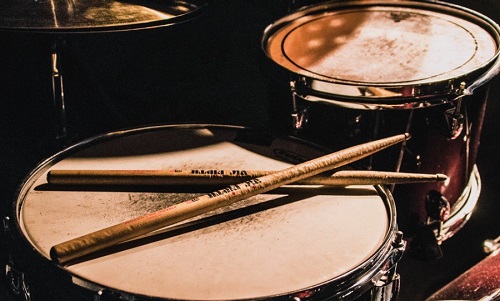How to Make the Most Out Of Drum Loops

There are lots of tricks to add to your arsenal when it comes to using drum loops to make the most out of them. In this article, we’re going to explore the world of drum loops and how to properly use them to your advantage.
What are drum loops?
Drum loops are repeating patterns of drum beats that are designed to be used as a rhythmic foundation for music production. They are typically created using drum samples or recorded performances of live drummers, and can be edited and manipulated to fit the specific needs of a particular production.
Drum loops can be used in a wide range of musical genres, from hip-hop and electronic music to rock, pop, and beyond. They are commonly employed in music production as a convenient and effective way to quickly establish a solid beat and can be easily layered with other instrument sounds and samples to create a complete musical track. Additionally, drum loops can be tempo-matched to the specific tempo of a song, making them a versatile tool for music producers of all skill levels.
Drum loops are a great way to add rhythm and energy to any music production. They can be used for a variety of purposes, from adding a steady beat to creating an entire song. With the help of drum loops, producers can quickly build up their tracks without having to program every single beat. They can also give artists more creative freedom since they provide endless possibilities for experimentation and improvisation.
Drum loops have been employed in all manner of musical productions, particularly in the creation of soundtracks — for films and video games. They can alter a musical theme, a Leitmotif – a recurring musical theme – and give it new life while still maintaining its core. For example, if you watch any movie, chances are that there is a theme or a guiding musical concept – the Mission Impossible Theme, The 007 Guitar riff, etc – a drum loop can be added and synch up, along with various other instruments to adapt that theme while maintaining its core musical melody. In a way repurposing it for further use in the overall soundtrack of the project — in particular with video games where a soundtrack has to start dynamic and fresh even when the video game might take hours to complete.
How to use drum loops?
In the following section, we’re going to describe 3 of the main ways dum loops are used. We’ll give you tips and step-by-step guides on how to properly employ them in your music production.
Chop up drum loops
Chopping up drum loops is a technique where you take a full drum loop and break it down into individual drum hits. This allows you to manipulate the loop in new and creative ways, such as rearranging the beats, changing the rhythm, or even using individual hits to create completely new patterns.
Here’s how to chop up a drum loop:
- Load the drum loop into your DAW – digital audio workstation.
- Zoom in to the waveform of the loop so that you can see individual drum hits.
- Use your DAW’s selection tools to highlight individual hits and then copy and paste them into separate tracks.
- Rearrange the individual hits in separate tracks to create new patterns and rhythms.
- Mix and match the new patterns to create custom drum beats that are unique to your production.
Chopping up drum loops is a powerful technique that can help you add creativity and originality to your drum tracks. Experiment with this technique and see how it can enhance your music production — punctuating themes and styles with it.
Layer different drum loops
Layering different drum loops is a common technique used in music production to create more complex and energetic drum tracks. By layering different loops, you can add depth and texture to your beats, and create a more varied and interesting rhythm section.
Here’s why and how to layer different drum loops:
- Why layer drum loops: Layering drum loops is a great way to add variety and interest to your drum tracks. By combining different loops, you can create new rhythms and beats that are unique to your production. Additionally, layering can help you fill out the mix and create a thicker, more powerful sound.
- How to layer drum loops: To layer drum loops, you’ll need to import multiple loops into your DAW – digital audio workstation. Next, you’ll need to adjust the tempo and timing of each loop so that they match the tempo of your song. Once you’ve done that, you can start layering the loops by mixing and blending them.
- Tips for layering drum loops: Experiment with different combinations of loops until you find the perfect balance; Use volume and panning controls to give each loop its own space in the mix; Experiment with using different processing effects to shape the sound of each loop: Use automation to bring different loops in and out of the mix throughout a song.
Equalization tool to adapt the drum loop
Using an equalization – EQ – tool is an effective and powerful, not to mention easy, way to adapt a drum loop to fit the needs of your music production. By adjusting the frequency balance of the drum loop, you can emphasize or de-emphasize specific elements, such as the kick drum, snare drum, or cymbals, to create a custom sound that fits your specific needs.
Here’s how to use an equalization tool to adapt a drum loop to your needs:
- Load the drum loop into your DAW (digital audio workstation).
- Insert an EQ plug-in on the drum loop channel.
- Analyze the drum loop and identify which frequency ranges correspond to different elements of the loop, such as the kick drum, snare drum, cymbals, etc.
- Use the EQ controls to adjust the frequency balance of the loop. For example, you may want to boost the low frequencies to make the kick drum stand out, or cut the high frequencies of the cymbals to reduce their impact in the mix.
- Use the EQ to make any other adjustments as needed, such as cutting out unwanted frequencies or emphasizing specific elements of the loop.
- Repeat the process for each drum loop you’re using in your production until each loop has been tailored to fit the needs of your song.
Is using drum loops cheating?
The use of drum loops, or any pre-recorded music loops, is a matter of personal opinion and subjective interpretation. Some musicians view the use of drum loops as a creative tool for songwriting and producing, while others see it as a form of “cheating” that takes away from the authenticity and musicianship of creating music from scratch.
The decision to use drum loops or not is up to the individual and their artistic vision. There is no right or wrong answer, and what is most important is that the music created is true to the artist’s vision and represents their unique voice and creativity.





